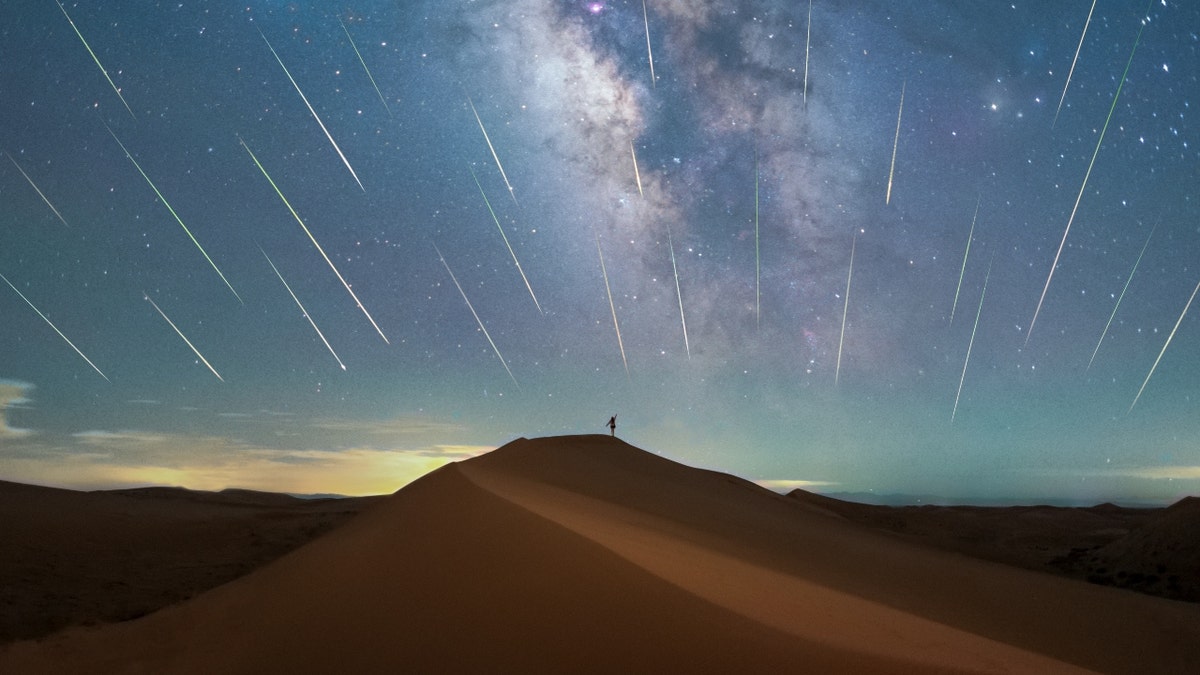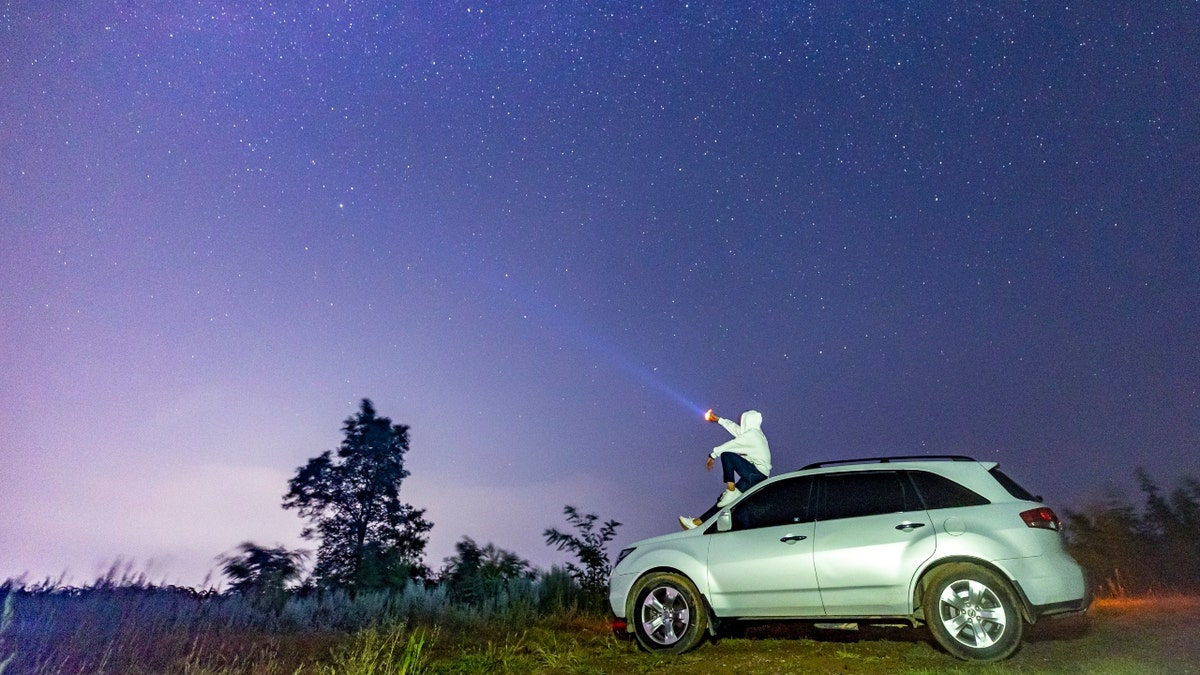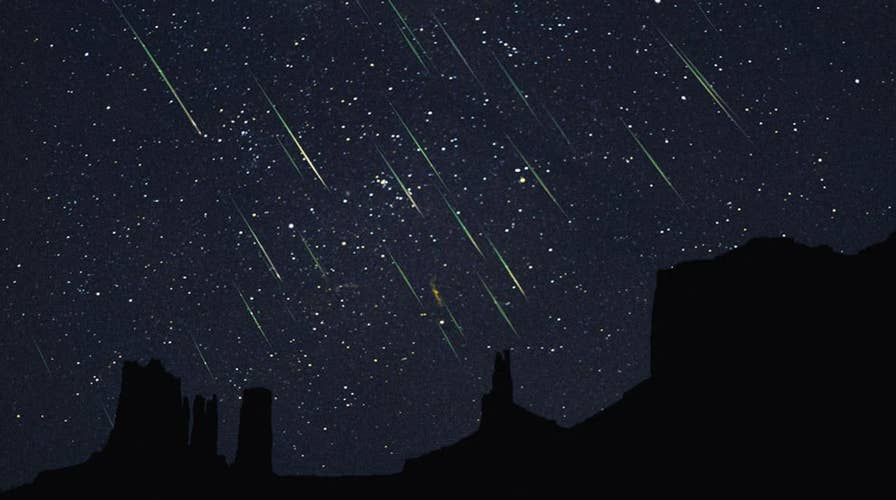Lyrid meteor shower: What to know
In late April, skywatchers in the northern hemisphere will get a view of 2018's Lyrid meteor shower. Here is everything you need to know about this year’s starry spectacle.
The Perseids – one of the biggest meteor showers of the year – have returned this summer.
According to NASA, the evenings of Aug. 12 and Aug. 13 will be a great opportunity for skywatchers to catch the show.
However, a full moon could negatively impact the view this year.
The agency notes that the Perseids are generally active from July 14 through Aug. 24.
NASA MARS ROVER DISCOVERS WEIRD STRING-LIKE OBJECT THAT GOES VIRAL

INNER MONGOLIA, CHINA - AUGUST 17, 2021 - The Perseid meteor shower is seen over the Tengger Desert in North China's Inner Mongolia Autonomous Region, Aug. 17, 2020. (Photo credit should read Costfoto/Future Publishing via Getty Images)
According to FOX Weather, storms could also be a negative factor, and the channel said that July 28 – when there is a new moon – will also be an excellent time to stargaze.
The channel noted that, depending on where the viewer is in the Northern Hemisphere, there could be up to 40 meteors seen per hour during the shower's peak.
The Perseids occur when Earth crosses through the stream of debris of the comet 109P/Swift-Tuttle and its meteors – most of which are pea-sized – create bright "shooting stars" as they burn up in the planet's atmosphere.

Photomontage taken on Aug. 13, 2021 shows the night sky during the Perseid Meteor Shower above an ecological demonstration zone of Engebei in Kubuqi Desert, north China's Inner Mongolia Autonomous Region. (Photo by Lian Zhen/Xinhua via Getty Images)
NASA'S PERSEVERANCE ROVER SPOTS PIECE OF ITS OWN LANDING GEAR ON MARS
The meteors appear to radiate from the constellation Perseus, or the shower's "radiant," but can be seen streaking across the sky anywhere at a speed of 37 miles per second.
The shower is also known for its fireballs, which can last longer than an average meteor streak.

The Perseid meteor shower is seen over the Zhongtiao Mountain range in Yuncheng city, North China's Shanxi Province, Aug. 14, 2021. (Photo credit should read Costfoto/Future Publishing via Getty Images)
Swift-Tuttle orbits between the sun and beyond the orbit of Pluto once every 133 years.
CLICK HERE TO GET THE FOX NEWS APP
Every year, the Earth passes near the path of the comet.
NASA says there is no chance the planet will soon run into the comet.





















